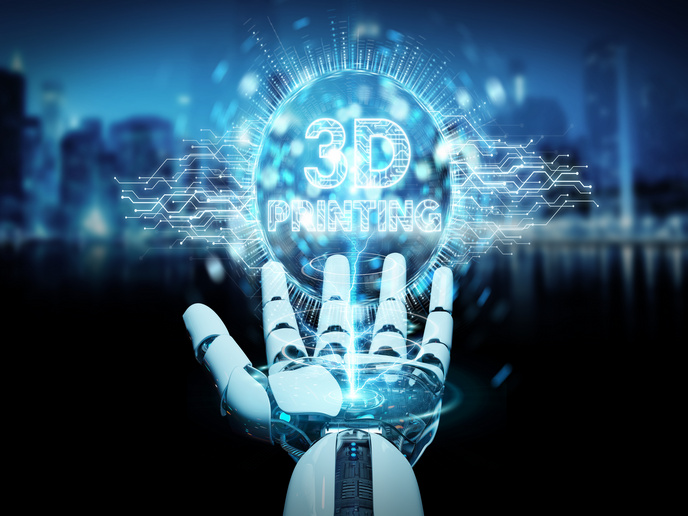3D-printing artificial muscles in a single step
Although technological advances have made it possible for artificial muscles to contract much in the same way human muscles do, they just have not been able to match the versatility and grace of movement made possible by the latter. Researchers supported by the EU-funded PROBOSCIS project have now come a step closer to this goal with their novel design of 3D-printed pneumatic artificial muscles. Their work was published in the journal ‘Science Robotics’. Called GeometRy-based Actuators that Contract and Elongate (GRACEs), the muscle-like structures the researchers created can each extend and contract as required simply by means of their geometric shape that resembles a spindle with pleats. As reported in an article posted on ‘Innovation Origins’, the number and type of GRACEs used can be chosen via a mathematical model, depending on what the muscle has to perform and on the required movement.
Personalised contraction and extension
“State-of-art artificial muscles are good, the problem is assembling and customizing them. The device we created offers a high degree of flexibility since contraction and extension can be personalized. In addition to that, GRACEs also allow the muscle to stretch out,” states study first author PhD student Corrado De Pascali of PROBOSCIS project coordinator Istituto Italiano di Tecnologia in the article. GRACEs can be manufactured in different sizes and using different materials, making a wide range of lifelike movements possible. “Their size is limited purely by the manufacturing technology used,” observes the researcher, this time in a ‘EurekAlert!’ news release. “They can be built in different sizes, and we can vary their performance, both in terms of deformation and strength, and manufacture them using various materials and technology, even already built into the structures to be fabricated.” This makes for faster and simpler prototyping and manufacturing of pneumatic artificial muscle-based devices. The project team demonstrated the versatility of their actuators by means of a pneumatic hand that was 3D-printed in a single step using a commercial 3D printer. Weighing around 100 grams and similar in size to a human hand, the artificial hand consists of 18 GRACEs of different shapes and sizes. Every finger is made up of three small GRACEs. As described in the ‘Innovation Origins’ article, when the pneumatic muscles are inflated, they pull the tendons, enabling the fingers to open and close. Since each finger has an autonomous pneumatic line, each one can be deactivated separately. Additionally, the wrist is composed of four bigger GRACEs – two on each side. As a result of this arrangement, pressure amounting to only a few tenths of a bar is enough to bend the fingers, rotate the wrist or twist the palm. The material chosen for the hand is soft resin. In the ‘Innovation Origins’ article De Pascali explains how choice of material affects the actuator: “Choosing a filament over another changes the forces a GRACE can execute. A stiffer material can sustain higher pressures than a softer one, so it can lift higher loads to over 1000 times its weight.” As part of the PROBOSCIS (Proboscidean sensitive soft robot for versatile gripping) project, the team is developing a robotic arm inspired by an elephant’s trunk. According to the researcher, the arm “will be made of thousands of GRACEs, all printed in one go.” For more information, please see: PROBOSCIS project website
Keywords
PROBOSCIS, 3D-printed, muscle, pneumatic, artificial muscle, actuator, hand, robot



